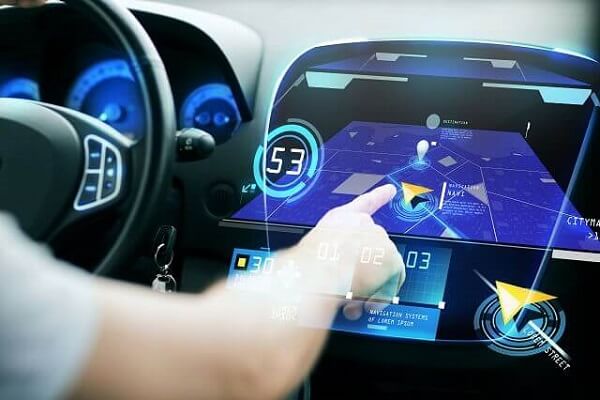Antilock brakes and airbags used to be the latest technology to save lives in the event of a car crash. Today, auto manufacturers are stepping up their game and creating vehicles that not only protect you in an accident but help avoid the collision entirely.
Most of the technology is still in its early stages, but there are vehicles on the road already using this technology – and more to come. Therefore, if you are in the market for a new car, consider not only the features that protect you during the accident but potential features that could prevent an accident.
What Are Safety Features Available for New Cars in Vail/Eagle County That Prevent Accidents?
Depending on the manufacturer, you may have all or just a select few of these features. Regardless, these features could save a life and save you thousands in costs associated with an accident.
Traction Control
Traction control is not a new technology but one that is continually evolving. It is an electronically controlled system which prevents wheel spins in acceleration so that wheels remain in control even in slick condition. Some of these systems are limited to lower speeds. However, newer vehicles have the updated technology that can control traction issues even at higher speeds.
Electronic Stability Control
Stability control is the upgraded version of traction control. Known as ESC, this system keeps vehicles on its path while turning and prevents skidding or sliding. Sensors detect wheel speeds, steering angles, and motion. Once a car is detected as moving outside the correct path, the ESC kicks on and brakes one or more of the wheels until control is regained and the car resumes the right path.
You might not realize that your current vehicle has ESC, because manufacturers use various names for the technology. For example, Audi refers to it as their Electronic Stability Program (ESP), while Honda calls it the Vehicle Stability Assist (VSA) and Buick refers to it as StabiliTrak.
Regardless of the name, all these programs are created similar and function using ESC technology.
Brake Assist
Brake assist is a newer technology that will detect when drivers are panic braking and will apply maximum force braking to the car. The system does not lock up the wheels because it works in tandem with the Anti-Lock Brake System (ABS).
When a driver goes to panic stop, they rarely apply maximum pressure to bring the vehicle to a full stop. Manufacturers have created this technology to ensure the car does stop as the driver intended.
Forward Collision Warning Systems
Rear-end collisions are frequent in the United States, but with a forward collision warning system they may not be much longer. These systems use a combination of cameras, lasers, and radars to scan for vehicles ahead. They alert the driver when they get too close to another car and that a crash is likely. The systems will alert the driver with an audible and visual sound – warning them to apply the brakes before a collision.
Automatic Emergency Braking Systems
Some models have taken their forward collision warning systems further. Instead of notifying the driver, the vehicle notifies and automatically applies the brakes. The car senses the potential collision, and when the driver does not react, the cars do the work automatically – thus, decreasing the potential for a rear-end collision even further.
Pedestrian Detection Systems
Forward collision is an excellent technology, but it is only designed to detect vehicles – not people. Some manufacturers are starting to implement pedestrian detection. These use the combination of forward collision and automatic braking to prevent an accident between vehicles and pedestrians. Some systems only alert the driver, while others outright stop the car.
Adaptive Cruise Control Systems
Cruise control is helpful on long drives but also allows drivers to forget their distance between vehicles ahead. Adaptive systems will use a series of lasers and radars to detect leading vehicles and adjust the speeds accordingly to maintain a safe following distance.
Lane Departure and Keeping Assistance Systems
Lane departure systems will warn drivers when they are exiting their lane. The system only initiates if the driver changes lanes or veers out of their lane without using a turn signal – thus, encouraging drivers to use the proper signals. A lane keeping system works with the LDW by mildly steering the car back into the right lane when a departure is detected.
Blind Spot Warning Detection Systems
Blind spots make changing lanes or even turning in an intersection dangerous. These systems warn drivers that a vehicle is in their blind spot so that they do not cut in front of that hard to see vehicle. Many systems will also sound an alarm if the car is pushing into a lane with something in its blind spot. Others will automatically steer the car out of the lane so that it avoids a collision.
Tire Pressure Monitoring Systems
Most likely, your vehicle will have a tire pressure monitoring system. A government regulation required that all vehicles manufactured after October 31, 2006, have these systems because underinflated tires are a safety hazard. The systems notify drivers if they have low pressure in their tires, which can indicate a leak, puncture, or excessive wear on the tire and ensures drivers have them checked.
While the technology is relatively accurate, motorists should still check their tire pressure manually every month just to be safe. Also, some systems are more sensitive than others. You may notice your system alerts you in the winter when tire pressure naturally drops because of lower temperatures. Do not ignore the sensors, even if they become obnoxious. Instead, check your tire pressure manually and adjust the air pressure to be safe.
Injured in a Motor Vehicle Accident?
Despite the latest technology, accidents still happen. Whether it is a defect in the vehicle or simply driver error, when you are injured in a car accident, you have the right to seek compensation for your injuries.
Contact attorney Mark S. Rubinstein, P.C. today to discuss your injury case. You can meet with him for a free consultation at 970-704-0888, or you can request more information by filling out the online contact form.

